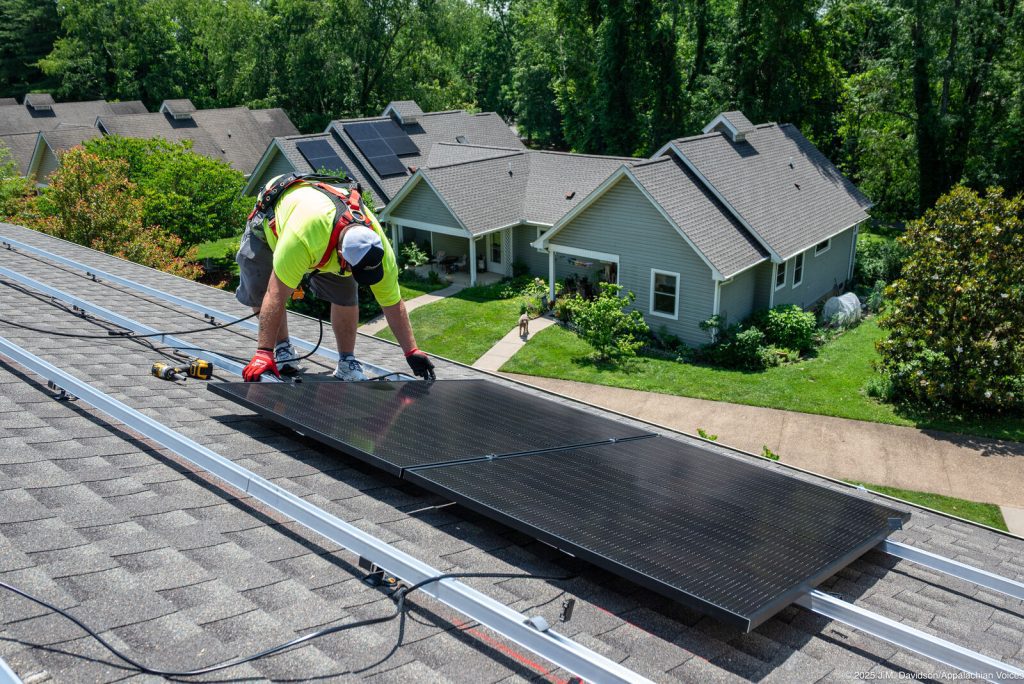Northshore Road Would Destroy Smokies Backcountry
If someone were to tell you that the largest mountain roadless area east of the Mississippi River was in danger of being bisected by a road which would essentially go nowhere and serve no purpose, what would your reaction be?
The Northshore Road, also known as the “Road to Nowhere,” is back on the playing field after being relegated to inactive status for the last 20 years. The proposal would construct a road across the northern shore of Lake Fontana from the dam to the current “end” of the road, located just east of Noland Creek. The road would turn what is a backcountry refuge for untold numbers of hikers, horsemen, and fishermen into just another chunk of land accessible by car. Further, the harm that would be caused during construction would be nothing short of disastrous.
This threat was created through Congressional passage of the 2001 Budget Appropriations Bill that provides $16 million to begin construction of the Northshore Road within the Park. Representative Charles Taylor (R-11th) slipped an obscure rider into the Transportation Appropriations Act allocating this money for construction of a “north shore road in Swain County.”
Conveniently, there was no mention of the Great Smoky Mountains National Park. Due to this congressional slight of hand, no National Park Service staff, NC officials, concerned citizens, or other interested parties were consulted or even made aware of this project. With help from Sen. Jesse Helms, this provision sailed through the Senate without an iota of dissent, due solely to the covert nature of the appropriation itself.
The Northshore Road proposal originated as partial compensation to Swain County, NC in a 1943 for the condemnation of their land to construct Lake Fontana. Since then, Congress occasionally appropriated money for short segments of the road; however subsequent environmental legislation and increasing public concern for the biological integrity of the Park revealed the destructive impacts that would accompany further construction.
Through time, completion of the road has become increasingly unlikely, and alternatives have been proposed in order to satisfy all parties involved, but no funding for these have ever been forthcoming from Congress. Additionally, NC Highway 28, completed in 1946, effectively serves the purposes a road across the North Shore was meant to serve. This links US Highway 19 and Bryson City with Fontana Village, and to NC Highway 129 and on to Deal’s Gap.
Rep. Taylor has also stated his intention to seek Congressional approval for more funding. The estimated cost of the project looks to be a minimum of $150 million. The majority of this section of the Park has been proposed for Wilderness designation, which would permanently protect what most people already assume is land that is off-limits to any kind of development. Construction of this road would irretrievably change the current nature of this portion of the park.
The NPS and Great Smokies staff remain opposed to further construction of this road. Because of the nature of the current funding, however, the park has been forced to enter into discussions with the Federal Highway Administration about the project planning and design. A study conducted in the early 1980’s found that the construction of this road would be a “likely environmental disaster.”
There are serious environmental threats posed by the road’s construction: it would impact wildlife movement and introduce an avenue for exotic and invasive plant and animal species. It would cut through the “Anakeesta” rock formation, which would cause leaching of acid into adjacent streams, a death sentence for all aquatic life. This scenario has already occurred elsewhere in Western North Carolina, and in some portions of the previously constructed Northshore Road segments.
Add to all this the fact that a cash settlement has been proposed numerous times over the years, only to be scuttled by WNC’s congressmen. Citizens for Economic Future of Swain County, a group of Swain County citizens have been pursuing a settlement of this matter. Instead of a controversial and expensive road with dubious commercial drawing power, they seek a cash settlement from the government in “substitute performance” of the original 1943 agreement.
The amount is still under consideration, but given the cost of constructing the road and extrapolating that to present day values, the amount would be substantial. So large, in fact, that merely investing the principal would yield an annual interest payment nearly equal to the yearly budget of Swain County. Look at the two alternatives and decide which is the better deal for the residents of Swain County and the tourist who enjoy the splendor of the GSMNP.
Contact Congressman Taylor and tell him what you think: Honorable Charles Taylor, 231 Cannon House Office Bldg., Washington, D.C. 20515; email: repcharles.taylor@mail.house.gov; phone: (202) 225-6401. Contact Senator John Edwards about a cash settlement at: Federal Office Building Suite 200, 151 Patton Ave., Asheville, NC 28801; senator@edwards.senate.gov. Phone: 828-285-0760.
Related Articles
Latest News

Leave a comment
Your email address will not be published. Required fields are marked *




